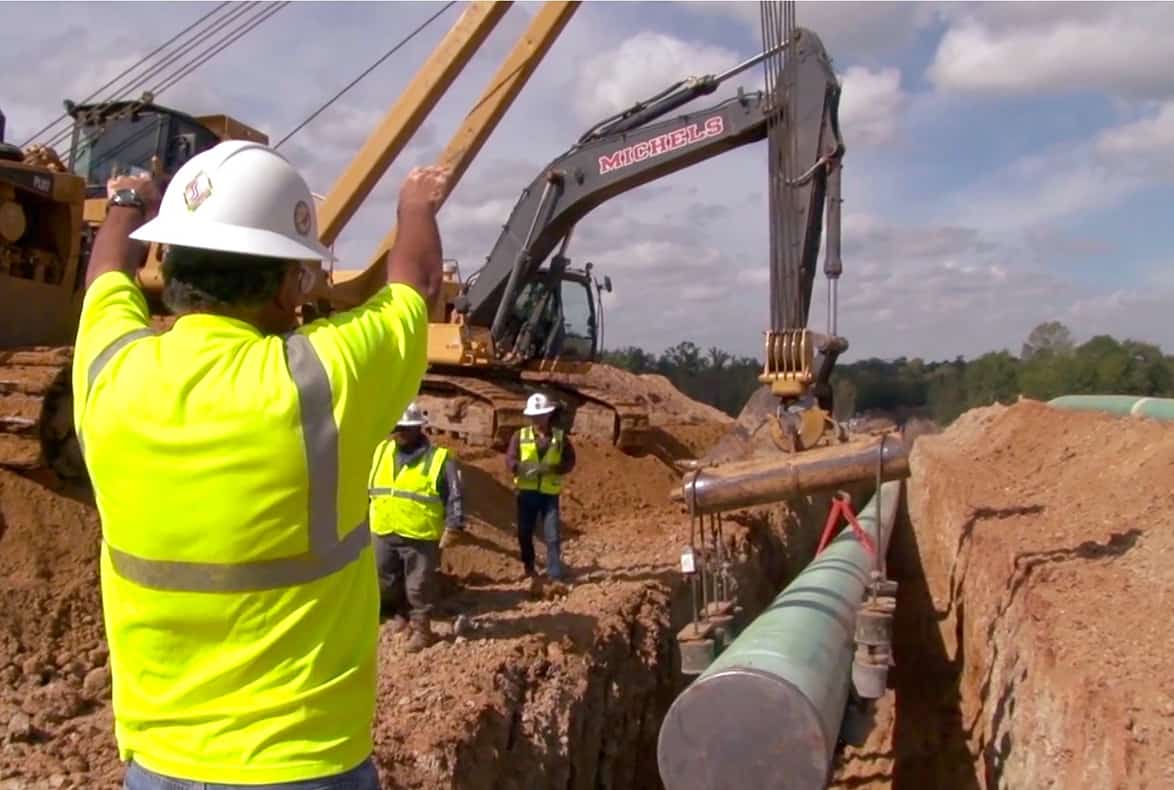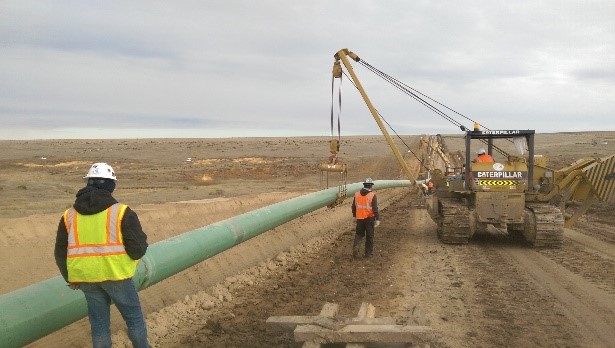Case Study: Creek Pipe Texas and the Impact of Real-Time Water Analytics
Wiki Article
Introducing the most up to date Developments in Pipelines for Reliable Water Monitoring
The development of pipeline modern technology is improving water management methods. Current developments, specifically in clever sensing unit innovation and leak discovery systems, promise boosted effectiveness and sustainability. These developments make it possible for real-time surveillance and predictive upkeep, resolving crucial water difficulties. As areas undertaking for strength, the duty of green products becomes progressively significant - Creek Pipe Midland. What various other innovations are on the perspective that could better change our method to water source administration?Improvements in Smart Sensing Unit Modern Technology
As water management systems become increasingly complex, developments in wise sensor technology play a necessary duty in improving effectiveness and sustainability. These sensors allow real-time monitoring of water high quality, flow rates, and pressure degrees, giving vital data for efficient management. By integrating Web of Points (IoT) abilities, smart sensing units promote remote accessibility and information analytics, permitting drivers to make educated choices swiftly.Moreover, anticipating maintenance comes to be feasible via making use of innovative formulas that examine sensing unit data to forecast prospective failings prior to they happen. This aggressive method lessens downtime and minimizes repair work expenses. Furthermore, smart sensing units add to the conservation of water sources by spotting leakages and irregularities in the system, making certain prompt action is taken to alleviate waste. Overall, the application of clever sensor technology in water administration pipelines marks a substantial action in the direction of optimizing source usage and promoting ecological sustainability.Eco-Friendly Materials for Sustainable Pipelines
Cutting-edge strategies in water monitoring pipelines significantly include environment-friendly products to improve sustainability. These products goal to reduce ecological influence while preserving toughness and performance. Biodegradable plastics, for circumstances, are obtaining grip as viable options to traditional PVC, minimizing long-term waste in garbage dumps. Additionally, recycled products, such as redeemed rubber and steel compounds, are being used to produce robust pipe systems that considerably reduced carbon footprints.Moreover, bio-based products stemmed from renewable sources are emerging as encouraging alternatives, providing both resilience and lowered reliance on fossil gas. Producers are likewise checking out cutting-edge layers that improve deterioration resistance while remaining environmentally benign. These improvements not only advertise a round economic climate but additionally straighten with worldwide sustainability goals. As water deficiency ends up being a pushing concern, the fostering of environmentally friendly products in pipe building and construction stands for a crucial action towards responsible water administration and source conservation.
Real-Time Tracking and Data Analytics
While traditional water administration systems commonly relied on periodic evaluations, the assimilation of real-time surveillance and data analytics has transformed the landscape of pipeline management. This cutting-edge method makes it possible for drivers to continuously track water pressure, circulation, and quality, facilitating instant feedbacks to possible concerns - Creek Pipe Texas. By leveraging sophisticated sensors and IoT modern technology, information is accumulated and evaluated instantly, offering actionable understandings that enhance decision-making processes.Real-time analytics not just boosts operational performance yet likewise aids in resource appropriation, ensuring that water circulation is optimized. Predictive analytics can forecast need patterns, enabling proactive steps to be applied, thus reducing waste and boosting sustainability efforts. The capacity to imagine information through dashboards help in determining patterns and anomalies, which is important for maintaining the integrity of water supply systems. This shift in the direction of real-time surveillance represents a considerable innovation in guaranteeing the performance and sustainability of water administration pipelines.Advancements in Leakage Discovery Systems
The surge of real-time tracking has led the way for innovations in leakage discovery systems within water monitoring pipelines. Modern technologies, consisting of acoustic sensors and fiber optic cable televisions, make it possible for operators to identify leaks with unmatched precision. Acoustic sensors, for instance, find acoustic waves generated by escaping water, permitting instant place pinpointing. In contrast, fiber optic systems make use of temperature level adjustments along the pipeline to expose anomalies indicative of leaks.Additionally, maker understanding algorithms are being used to analyze information collected from these sensing units, boosting anticipating upkeep capabilities. By refining historic information and recognizing patterns, these systems can forecast possible leakage areas prior to they take place, reducing water loss and reducing fixing costs.Furthermore, combination with geographical info systems (GIS) enables much better visualization and monitoring of pipeline networks, streamlining the action to detected leaks. Collectively, these advancements signify a transformative change in how water monitoring systems resolve leak detection.Enhanced Resilience and Longevity of Pipeline Products
Developments in pipe products are significantly improving the durability and longevity of water administration systems. Cutting-edge products, such as high-density polyethylene (HDPE) and enhanced concrete, are verifying to be much more immune to corrosion, stress, and environmental stressors. These contemporary materials not just prolong the lifespan of pipes but also reduce upkeep costs and the frequency of repairs.Additionally, innovations in composite materials, which combine numerous substances to maximize performance, are being utilized for their remarkable strength-to-weight proportion and versatility. This enables pipes to better endure severe climate condition and ground movements.Moreover, the intro of protective coatings better boosts the resilience of pipes versus chemical degradation and physical wear. Consequently, water management systems are coming to be extra lasting and reputable, making certain the reliable delivery of water sources while decreasing the environmental impact related to constant pipeline substitutes.Integration of IoT in Water Circulation Networks
As water distribution networks develop, the combination of the Net of Things (IoT) is changing the means water resources are taken care of and checked. Smart sensing units and linked gadgets enable real-time information collection on water pressure, flow, and quality, helping with aggressive administration of framework. This advancement permits immediate discovery of irregularities and leaks, reducing water loss and decreasing operational costs.Furthermore, IoT modern technology supports anticipating upkeep by assessing usage patterns, which assists utilities plan repair services and upgrades better. Improved interaction in between tools warranties smooth data transmission, permitting for boosted decision-making based on exact, up-to-date information.Additionally, the integration of IoT promotes water preservation initiatives by providing consumers with insights into their intake behaviors, motivating even more accountable usage. Overall, the IoT reinvents water distribution networks, advertising effectiveness and sustainability in water management techniques.Situation Researches: Success Stories in Water Administration Solutions
Numerous municipalities and organizations have actually effectively applied innovative water management solutions, showcasing the efficiency of contemporary innovations in resolving water scarcity and circulation obstacles. One notable example is the city of San Diego, which integrated innovative metering facilities (AMI) to keep an eye on water usage in real-time, leading to a 10% decrease in consumption. Creek Pipe Company LLC. In a similar way, the water authority in Cape Town took on a smart leakage discovery system that determined and repaired leaks quickly, substantially minimizing water loss throughout the severe drought of 2017. In Australia, using recycled water supply in metropolitan areas has verified successful, enabling lasting watering methods and decreased need on potable water resources. Creek Pipe Company LLC These situation research studies illustrate that by leveraging modern technology and innovative methods, communities can boost their water administration strategies, making sure long-lasting sustainability and resilience in the face of expanding water difficultiesOften Asked Inquiries
How Do These Advancements Effect Water Utility Costs?
The advancements in pipe technology significantly minimize water loss and operational ineffectiveness. Water energies experience decreased upkeep and production costs, ultimately leading to lower costs for customers and enhanced sustainability in water administration methods.What Are the Ecological Effects of Pipe Installation?
The ecological impacts of pipeline setup can consist of habitat disturbance, soil disintegration, and potential water contamination. Modern methods aim to minimize these impacts, advertising sustainable practices in construction and lasting environmental conservation.
Exist Government Laws Affecting Pipeline Innovations?

Government policies substantially influence pipeline developments, mandating conformity with ecological requirements and security procedures. These guidelines aim to reduce eco-friendly risks while advertising advancements in technology, inevitably shaping the future of pipe framework and water monitoring methods.

Exactly How Can Consumers Gain From These Pipeline Innovations?
Customers can profit from these pipeline innovations through improved water high quality, decreased prices, enhanced integrity, and increased access to tidy water. Developments result in much more reliable resource administration, inevitably promoting sustainable practices within neighborhoods.What Future Fads Can We Expect in Water Monitoring Pipelines?
Future trends in water monitoring pipelines may include boosted automation, smart surveillance modern technologies, and lasting materials. These developments aim to improve effectiveness, minimize leakages, and improve total water quality, guaranteeing resource preservation for future generations. As water distribution networks advance, the integration of the Web of Points (IoT) is changing the means water sources are handled and kept an eye on. Many municipalities and companies have actually successfully executed innovative water administration options, showcasing the effectiveness of modern technologies in resolving water shortage and distribution obstacles. The water authority in Cape Town adopted a smart leak detection system that recognized and fixed leaks rapidly, considerably lessening water loss during the extreme drought of 2017. In Australia, the usage of recycled water systems in city locations has actually shown effective, allowing for lasting irrigation techniques and decreased need on drinkable water resources. Customers can profit from these pipe developments with enhanced water high quality, decreased expenses, improved integrity, and boosted access to tidy water.Report this wiki page